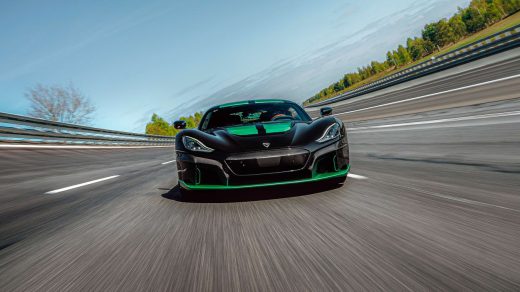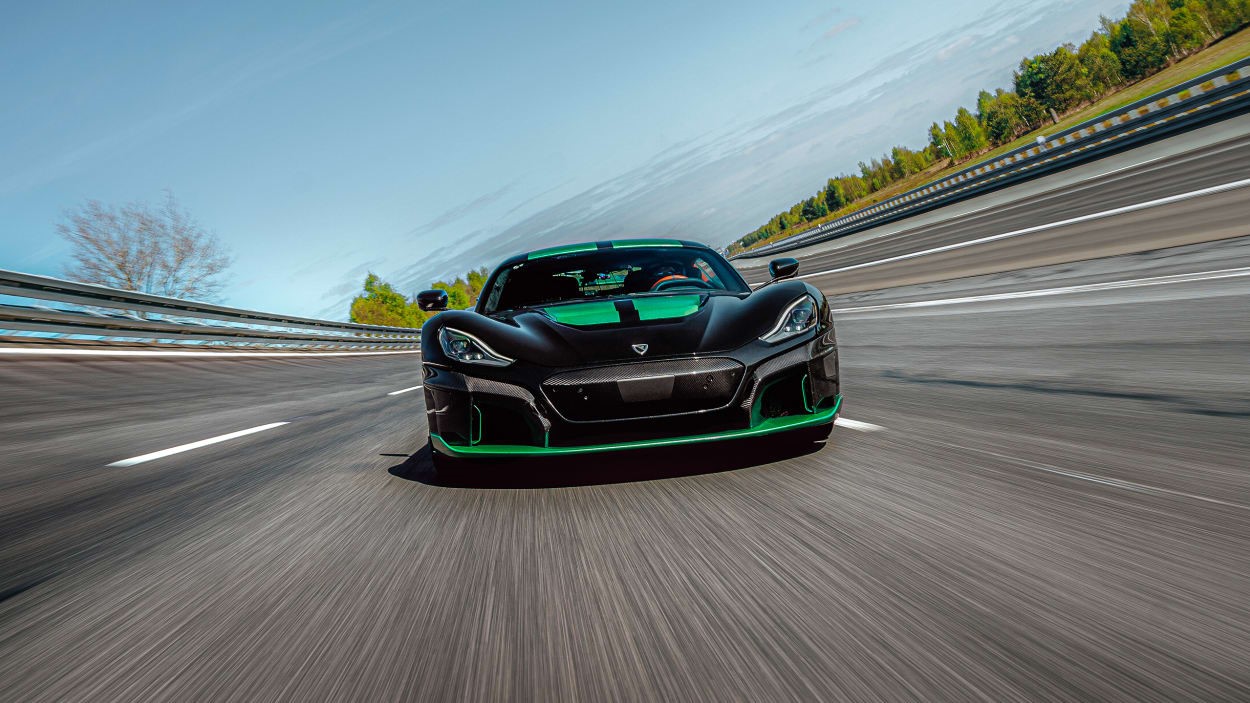Inside Rimac’s quest to break its own EV speed record
By Sean Evans
In January 2023, astrophysicist Neil deGrasse Tyson released an episode of his podcast discussing the theoretical physics limits of production cars’ acceleration. “The fastest you can accelerate forward is 1G,” deGrasse Tyson declared. “You cannot accelerate with normal friction between tire and road faster than the acceleration of gravity down towards Earth.” (1G is the acceleration we experience due to gravity.) He added that an object in free fall typically hits 60 mph in about three seconds.
But just a few months later, the Croatian automaker Rimac proved him incorrect.
In a pure “hold my beer” moment in April 2023, Rimac’s all-electric, 1,914-horsepower Nevera set a world record, launching from zero to 60 mph in 1.74 seconds.
“[Tyson had] a wrong assumption,” company founder and CEO Mate Rimac tells me over Zoom with a grin. As Rimac explains it, in his namesake company’s hypercar, you achieve 1.5Gs of acceleration.
“You probably felt that driving,” he adds.
Indeed I did. Sampling hard launches during a test drive in the Nevera at the 2023 Pebble Beach Car Week in California, the propulsion from a dead stop is otherworldly. It’s a full-body euphoric endorphin onslaught as the Nevera’s speedometer blurs into the hundreds. The car never stops pulling. You never tire of that sensation, either.
For perspective, in the time it takes you to read this sentence, the Nevera will have gone from a dead stop to 130 miles per hour. Five more seconds and you’re at 200 mph. In 22 seconds, you’ve reached 250 mph, the hypercar’s top speed. These are mind-melting achievements. In total, Rimac holds 22 world records for acceleration and speed.
Little wonder that Volkswagen Group, which owns Bugatti, Bentley, Lamborghini, Audi, and others, had its subsidiary, Porsche, snag a 10% stake in Rimac Automobili. Founded in 2009, when Rimac was 21, the juggernaut company now has more than $80 million in investments from Hyundai and Kia; VW ultimately merged Bugatti with Rimac, installing the 35-year-old Rimac as CEO.
Rimac will continue with its own production cars, though. The Nevera represents the first large salvo of units, with 150 slated to be manufactured, each with a staggering $2.2 million price tag.
Of course, auto speed victories are short-lived: Using Rimac’s battery, Koenigsegg’s Regera already reclaimed the zero-to-400-to-zero kilometers-per-hour accolade. Rimac and his engineering savants are openly competing with themselves to defend the coveted crown.
And Rimac says his vehicles still have “a lot of room” to go even faster. “We could have a one-second zero-to-60 mph car,” he says. “It’s possible. It would create 4 or 5Gs, which is brutal but still manageable by most people.” Formula One drivers pull 2Gs under acceleration, for example, and up to 5Gs while braking.
Sub one-second times are within reach, both for the car and driver’s body, Rimac believes, but diminishing returns would factor quickly.
Take Nevera’s recent world-record-shattering 7:05 lap at Nurburgring, shaving 20 seconds off the Tesla Model S Plaid’s time. “During that, our records showed the Nevera didn’t even hit full throttle. Our traction control has to regulate and lower the power because the tires can’t transfer it to the road,” Rimac says. “We may be able to go faster, but the extra weight and unnecessary hardware for that acceleration means we’re throwing unwanted weight around, a disadvantage for a lap time.”
Translation: Get ready for another record run. Soon.
An elephant in the need-for-speed race remains the tires. Rimac and Tyson agree that street tires have friction limits, though Rimac believes the limits to be higher. Either way, hypercars’ rapid leap in quickness caught big tire makers off-guard.
Improvements in tire technology are underway but there’s limited room to make a big jump forward in a short amount of time. Rimac shares the possibility of a sensor within the tire itself communicating directly with the car can improve performance, albeit incremental.
The Nevera’s inevitably quicker successor is currently “squirreling away in my head,” Rimac says with a smile. Among his initial what-ifs: alternatives to batteries, “wacky combustion engines with opposing pistons,” and new fuel cell technologies “but not hydrogen.”
While it’ll take an estimated five years to physically manifest that inkling of a vision, bending physics remains top of Rimac’s mind. “Ten years ago, no one believed you’d have zero to 60 times under two seconds. Our job is to make it possible and show you.”
And the industry will be ready. “Rimac looks promising,” says Brian Moody, executive editor of Cox Automotive. “One of the issues with electric vehicles is that they often feel generic or underwhelming even if they do have lightning-quick acceleration. With the Nevera, Rimac is adding exclusivity, striking design elements, high-end materials, as well as sharp handling and top-notch engineering.”
Ask Rimac how he plans, engineering-wise, to compete against himself when mapping out a car after the Nevera, knowing he will then ultimately have to beat it, and he laughs.
“That’s very real. It’s impossible to fight yourself to leave a little room for the next car. You’re too tempted to go flat out, and show everything you got,” he says. “The trick is to know how far you can lean out. The better you can understand the technology and physics of your product, the closer you can get to the edge.”
(20)



